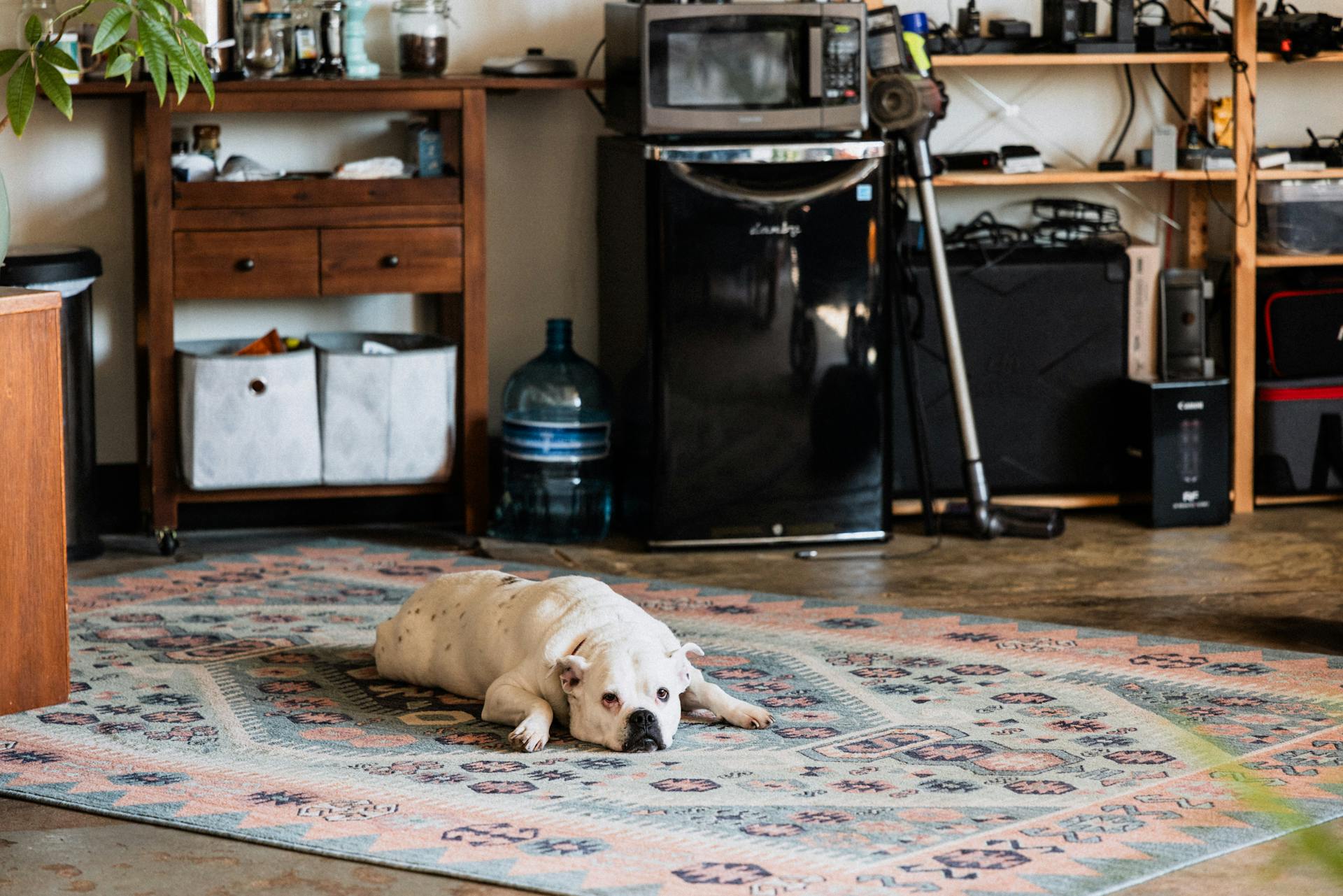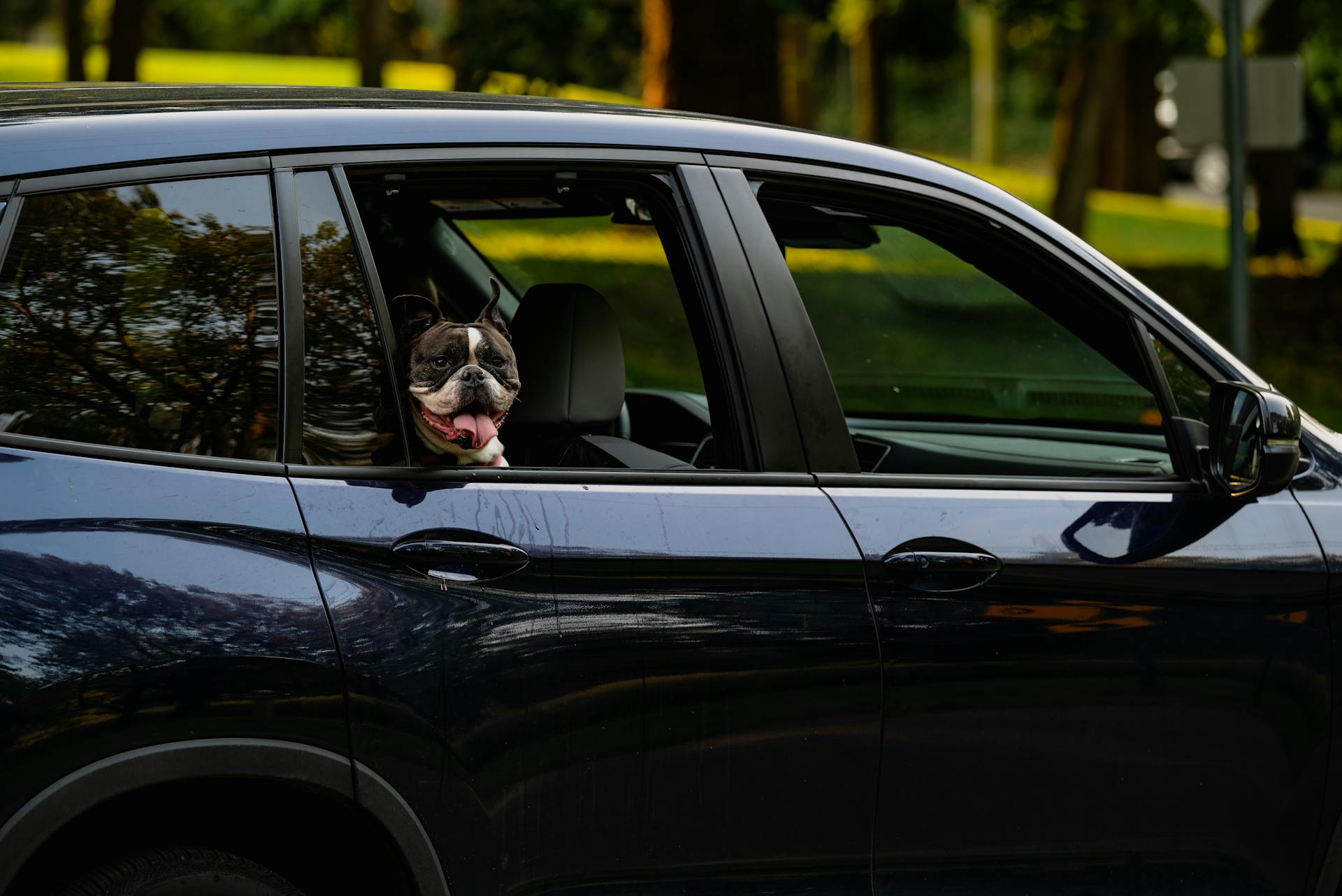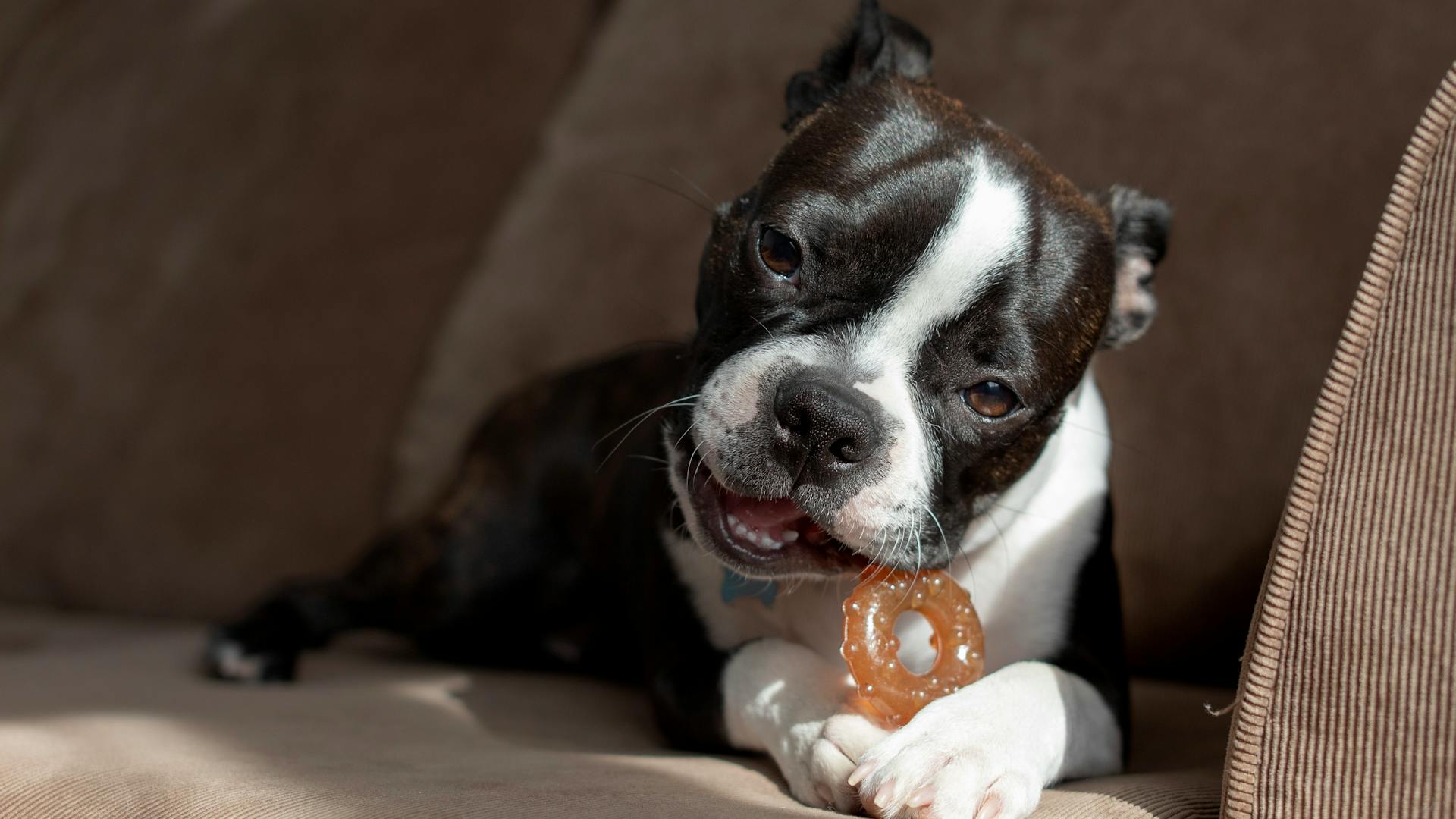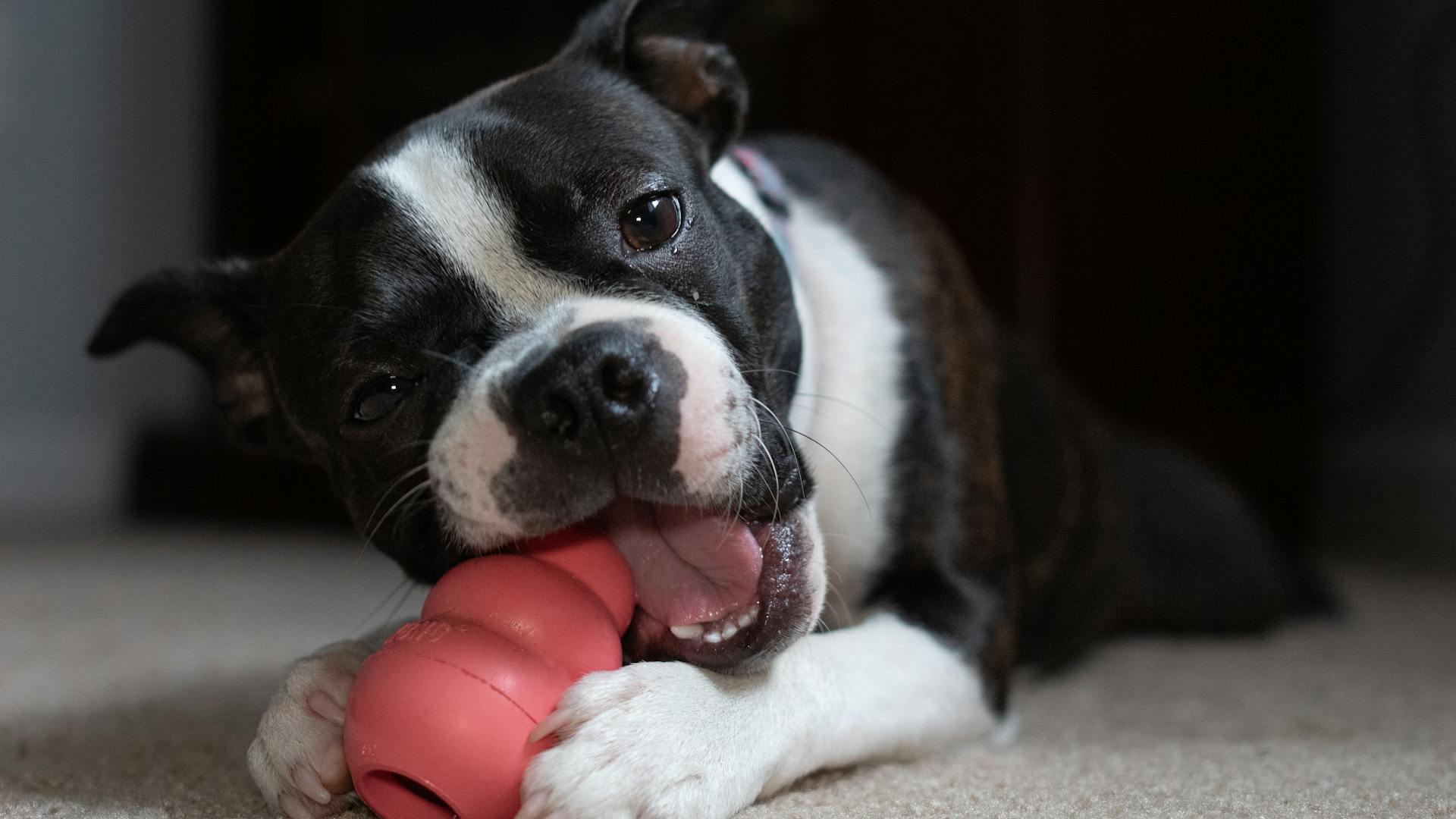
The Boston Terrier Standard Breed Information section is a treasure trove of fascinating facts about this beloved breed.
The Boston Terrier was first recognized as a distinct breed in 1893 by the American Kennel Club (AKC).
These dogs were originally bred for companionship and were known as the "American Gentleman" due to their friendly and affectionate nature.
Boston Terriers typically weigh between 10-25 pounds and stand between 10-15 inches tall at the shoulder.
They have a short, easy-to-maintain coat that requires minimal grooming.
Boston Terriers are known for their distinctive "tuxedo" markings, with a black body and white markings on the face, chest, and legs.
Physical Characteristics
The Boston Terrier's head is quite distinctive, with a square skull, flat on top, and a muzzle that's relatively short, square, wide, and deep. The muzzle is free from wrinkles and is approximately one-third the length of the skull.
Their cheeks are flat, and their brow is abrupt with a well-defined stop. The nose is black, wide, and has a well-defined line between the nostrils. The jaws are broad and square, with flews of good depth that completely cover the teeth when the mouth is closed.
Discover more: Boston Terrier Skull
The body of a Boston Terrier is deep with a good width of chest, and their back is short. Their ribs are deep and well sprung, carried well back to the loins, which are short and muscular. The rump curves slightly to the set-on of the tail, and the flank is very slightly cut up, giving the body a short but not chunky appearance.
Recommended read: Boston Terrier Back Leg Problems
Head and Skull
The Boston Terrier's head and skull are quite distinctive. The skull is square in appearance and flat on top, free from wrinkles.
Their cheeks are flat, which is a characteristic feature of the breed. The brow is abrupt and the stop is well defined.
The muzzle is relatively short, square, wide, and deep, with no tendency to taper. It's also in proportion to the skull and free from wrinkles.
The muzzle is shorter in length than in width and depth, making up about one-third of the length of the skull. The width and depth are carried out well to the end.
You might like: Bull Terrier Flat Faced Dog
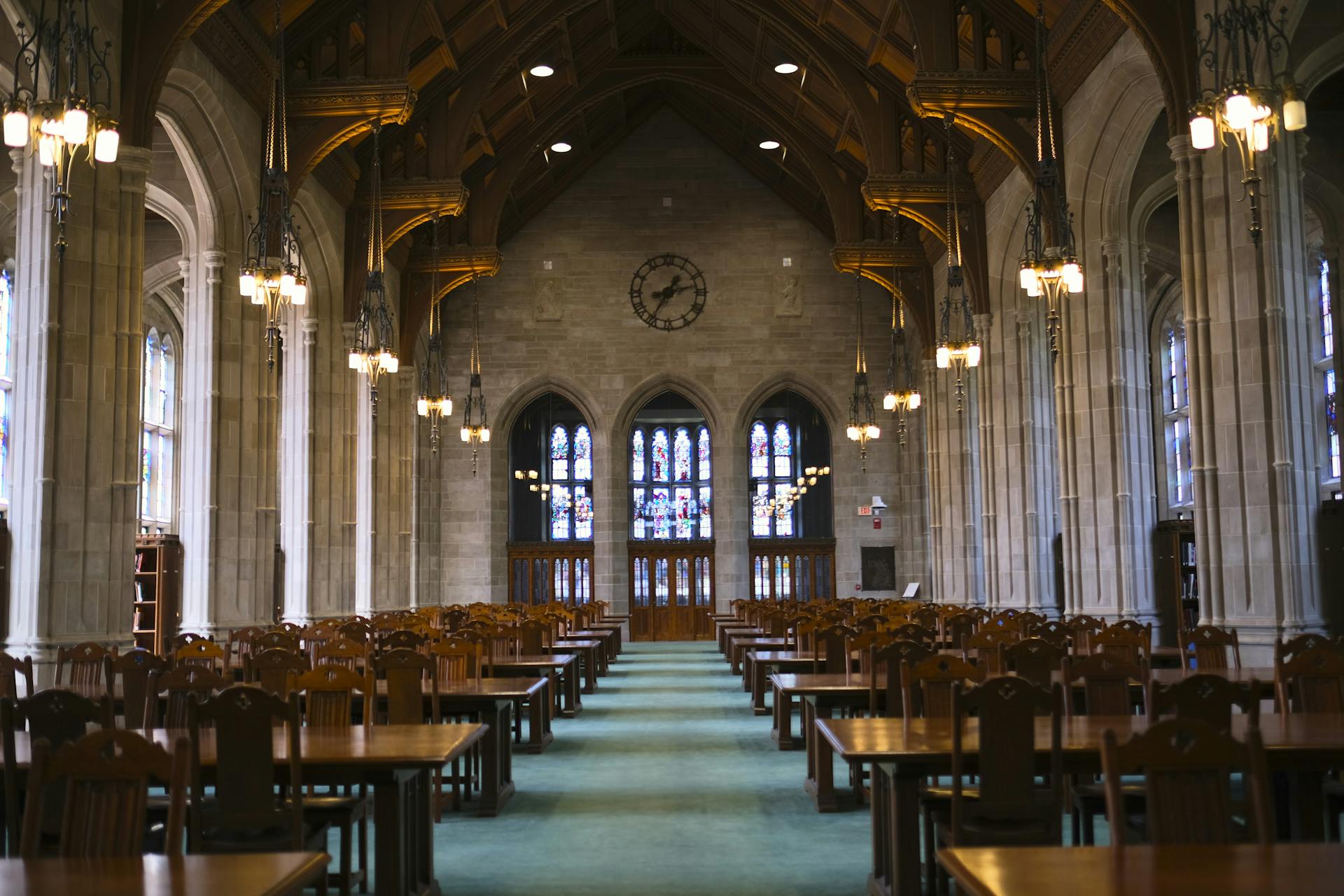
The muzzle is on a line parallel to the top of the skull, from the stop to the end of the nose. The nose is black and wide, with a well-defined line between the nostrils.
Their jaws are broad and square, which is a key feature of the breed. The flews, or lips, are of good depth and completely cover the teeth when the mouth is closed.
Forequarters
The forequarters of a dog are a crucial aspect of its physical characteristics.
The shoulders should be sloping, which gives the dog a distinctive appearance.
Legs are set moderately wide apart on line with the point of the shoulders.
This positioning creates a balanced and stable stance.
The legs are straight in bone, which is a key factor in the dog's overall structure.
Well-muscled legs enable the dog to move with agility and power.
Pasterns are short and strong, providing additional support and stability.
Elbows turn neither in nor out, maintaining the dog's overall balance and poise.
Body
The body of this breed is quite impressive, with a deep chest that's got good width to it.
The back is relatively short, which is a notable feature.
Ribs are deep and well sprung, carried well back to the loins, giving the body a nice, athletic shape.
The loins are short and muscular, which is a great asset for a breed that's likely to be active.
The rump curves slightly to set-on of the tail, creating a smooth, flowing line.
The flank is very slightly cut up, giving the body a defined edge.
The body appears short but not chunky, which is a great balance to aim for.
Expand your knowledge: Boston Terrier Body
Tail
The Boston Terrier's tail is a notable feature of the breed. It's short, fine, and tapering, with a straight or curled shape.
Their tails are set low on their back, which is a distinctive characteristic. Boston Terriers are devoid of fringes or coarse hair on their tails.
In terms of size, Boston Terrier tails are relatively short, typically not exceeding 2 inches in length.
Mouth
The mouth is a distinctive feature of this breed. Teeth are typically short and regular.
A well-proportioned bite is even, which contributes to a balanced overall appearance.
Health and Care
Boston Terriers are a relatively long-lived breed, with a life expectancy of 11-13 years, according to the article. This is slightly lower than the average life expectancy of purebred dogs.
Their brachycephalic (short-nosed) face structure can lead to breathing difficulties, especially in hot weather, as they tend to sneeze and snort due to restricted air flow. This can make exercise in hot weather challenging for them.
The breed is prone to eye issues, including cataracts and glaucoma, which can lead to vision loss if left untreated. Regular eye check-ups can help detect these problems early on.
Boston Terriers also tend to experience patellar luxation (dislocated knee) and may require a caesarean section during whelping.
A UK study found that over 80% of Boston Terrier litters require a caesarean section to give birth. This is a higher rate than other breeds.
Additional reading: Welsh Terrier Life Span
The breed is also predisposed to various dermatological conditions, including atopic dermatitis, demodicosis, and mast cell tumour.
Here are some common health issues that affect Boston Terriers, along with their prevalence based on a study of veterinary records:
- Eye issues (cataracts, glaucoma): Not specified
- Patellar luxation: Not specified
- Dermatological conditions (atopic dermatitis, demodicosis, mast cell tumour): Not specified
- Brachycephalic airway obstructive syndrome: Not specified
- Hereditary cataracts: One of the most commonly affected breeds
- Hip dysplasia: 0.36% of Boston Terriers (compared to 3.52% overall)
Their small body size and short coat make them sensitive to extreme temperatures, so it's essential to provide them with a comfortable living environment.
Temperament and Behavior
Boston Terriers are brash and self-assured, full of life and mischief, but also loving and demonstrative.
They can be stubborn, but are quick learners and easily corrected with treats and games.
Boston Terriers get along well with other household pets, but can be combative and overly assertive toward unfamiliar dogs.
They tend to be aloof toward strangers, making them an excellent watchdog that may bark excessively when excited.
However, their small size makes them ineffective as a protection dog, despite their tenacity.
Boston Terriers are generally quiet and bark only when necessary, making them an excellent choice for apartment dwellers.
Broaden your view: When Does a Boston Terrier Stop Growing
They have a strong, happy-go-lucky, and friendly personality with a merry sense of humor.
Both females and males are eager to please their owner and can be easily trained.
Boston Terriers are very protective of their owners, which may result in aggressive and territorial behavior toward other pets and strangers.
With proper socialization, they get along well with children, the elderly, other canines, and non-canine pets.
Consider reading: Pit Bulls as Pets
Frequently Asked Questions
What two breeds make a Boston Terrier?
The Boston Terrier is a cross between the English Bulldog and the white English Terrier. This unique mix of breeds resulted in a distinct and lovable companion.
Sources
- https://www.thekennelclub.org.uk/breed-standards/utility/boston-terrier/
- https://thebostonterrierclub.co.uk/the-boston-terrier-standard/
- https://www.britannica.com/animal/Boston-terrier
- https://www.thekennelclub.org.uk/search/breeds-a-to-z/breeds/utility/boston-terrier/
- https://en.wikipedia.org/wiki/Boston_Terrier
Featured Images: pexels.com
